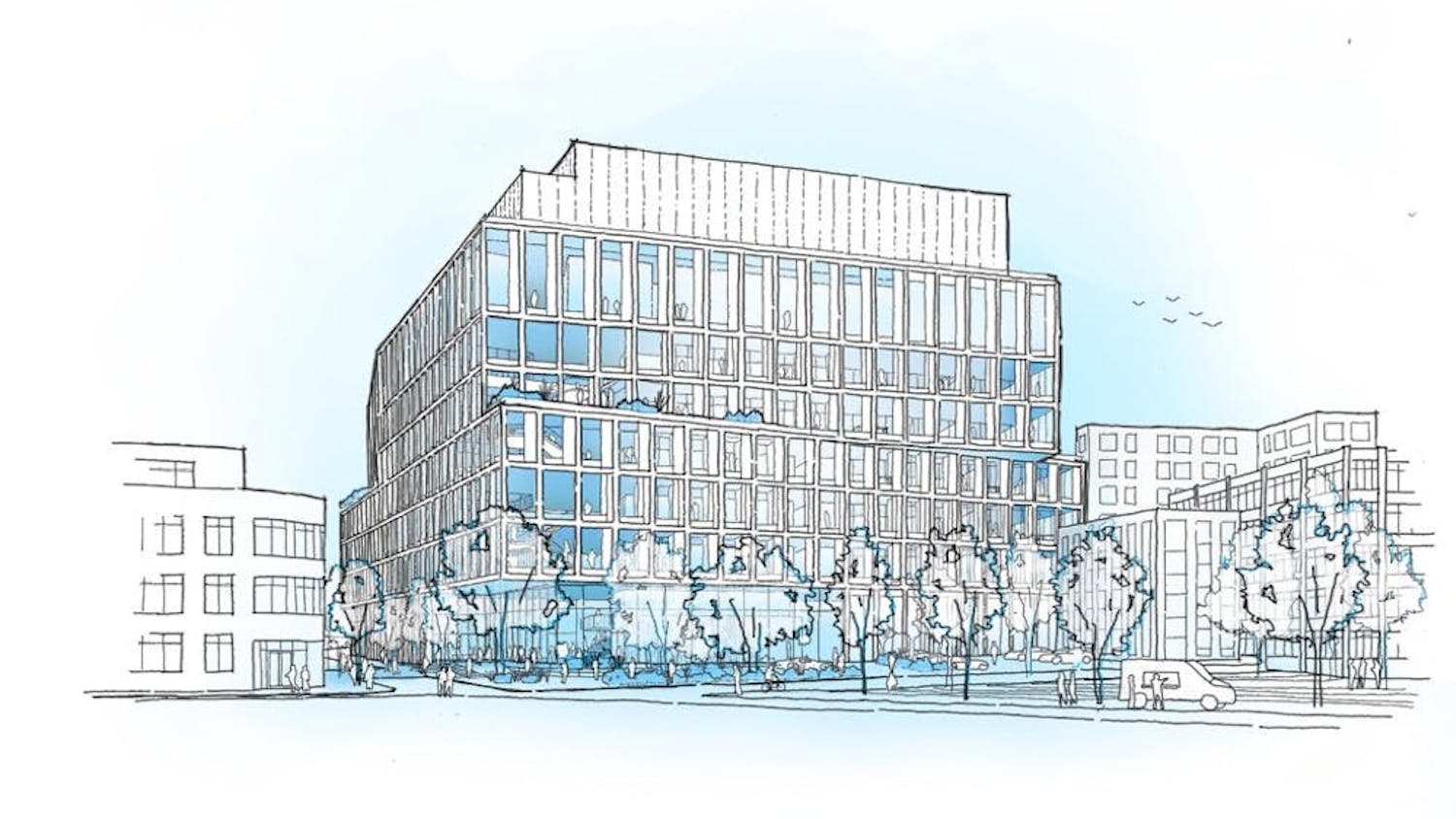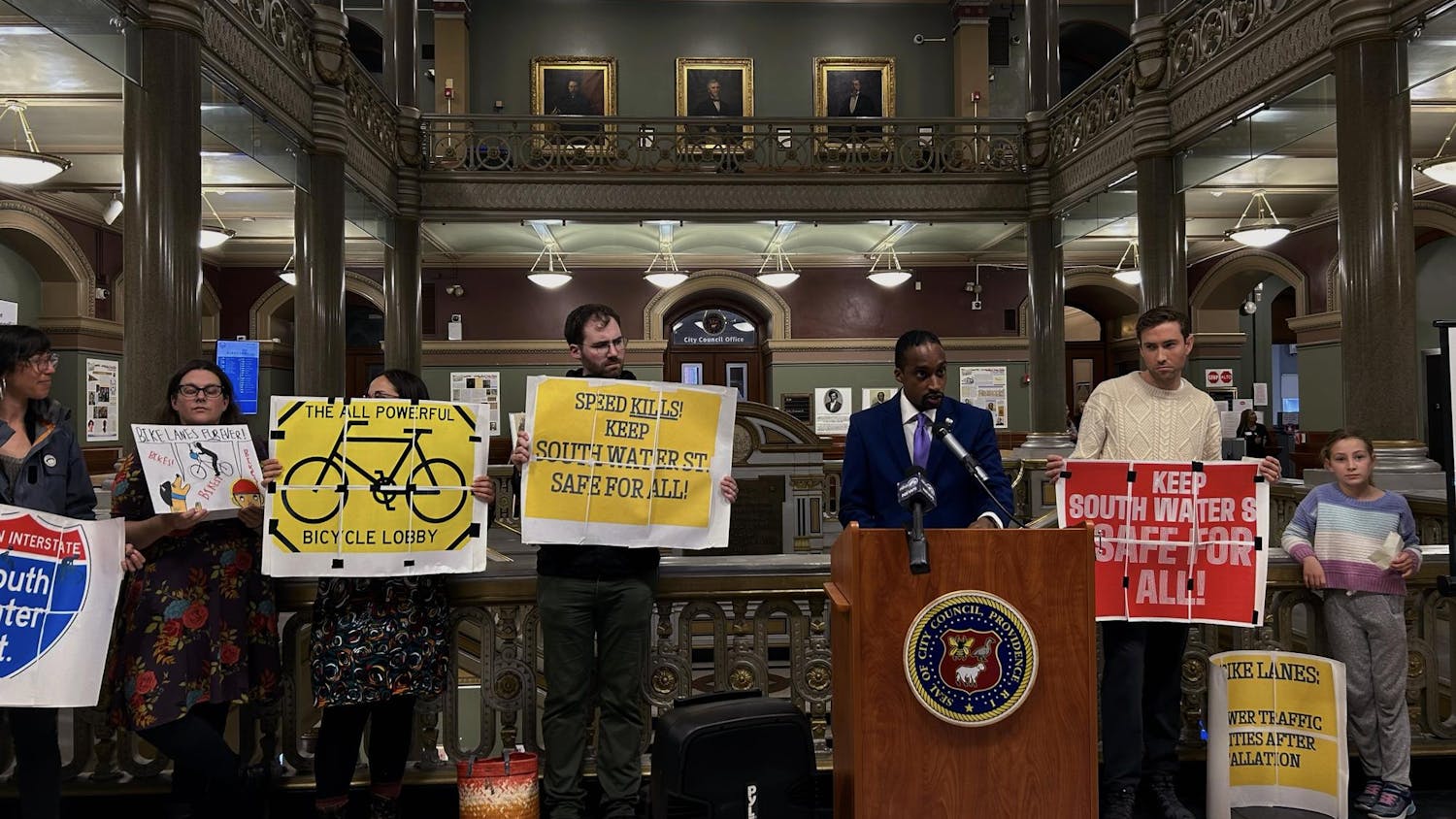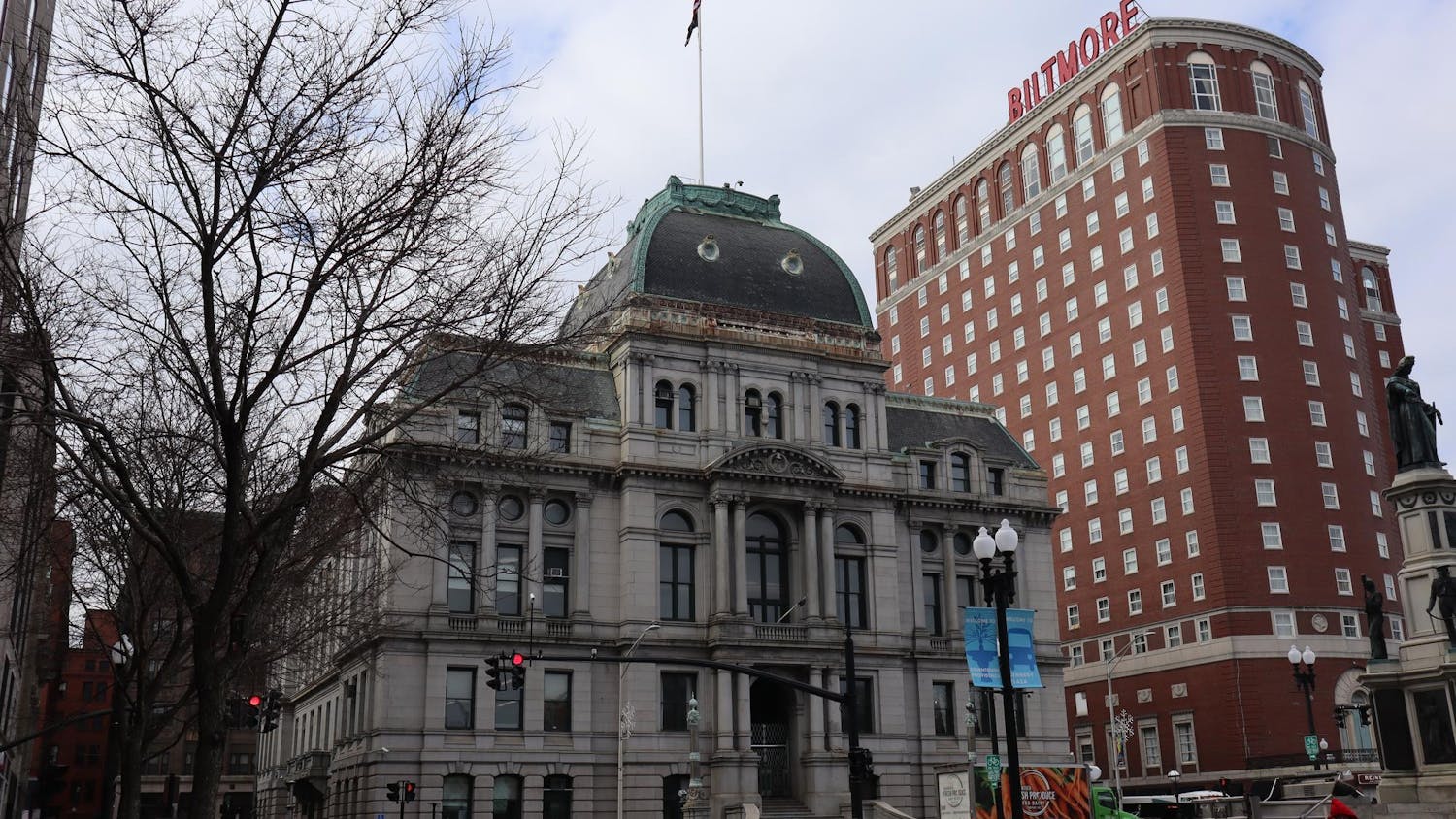Six months after the University settled negotiations with Providence Mayor Angel Taveras - through an agreement that increased Brown's voluntary contributions to the city in lieu of taxes, amid criticism from both students and city residents - the administration released a comprehensive report last month describing the University's "economic impact" on the city and state's struggling economy. The report outlines Brown's involvement and influence in the greater Rhode Island community, highlighting data on University spending and hiring and introducing the prospect of future development within Providence.
Knowledge economy
Providence has taken clear steps toward becoming a less industry-dependent economy, initiating the drive toward a "knowledge economy," which would shift the capital city's focus to technological development and innovation. The report focuses on the University's position in a state with poor financial prospects and suggests that the University could further promote economic activity.
The University initiated the economic review process in the spring of this year, enlisting the services of Appleseed Economic Development Consultants, the same firm that drafted similar reports for the University in 2005 and 2009. The information presented in the report is a reflection of data submitted by Brown and independent research conducted by Appleseed, said Hugh O'Neill, president of the firm.
The resulting six-part report emphasizes Brown's role in the city and state economies as an employer, consumer and research university, and it suggests the community benefits from the University's development of human capital and community service projects. These roles are explained through the perspective of financial growth and opportunities for the University, with a focus on development of the Jewelry District.
Purchasing power
In 2011, Brown was ranked the fifth-largest private employer in the state, just below Rhode Island-based firms such as Lifespan and CVS Corporation. Excluding jobs for students, the University sponsors jobs for 4,459 employees, 80 percent of which were full time last year. A similar report from 2005 notes 3,753 workers were employed by Brown that spring.
The 2012 report also claims the University is directly responsible for the creation or support of 1,050 jobs in private firms across the state in the construction, service and production industries through in-state spending.
The University spent nearly $328 million in the last fiscal year on goods, services and construction purchased from Rhode Island businesses and firms. But in-state spending on goods and services amounted to 37 percent of the University's overall expenditures in that area, while almost 70 percent of construction costs were paid out to Rhode Island firms. Of the total figure, $131 million of spending resulted from both direct and indirect construction costs related to the completion of three major infrastructure projects on campus during fiscal year 2011: the relocation of the Alpert Medical School, the construction of the Perry and Marty Granoff Center for the Creative Arts and the renovation of Metcalf Chemical Laboratory and Auditorium.
Student spending also supports economic growth in the city. According to the report, both direct and indirect spending by students and campus visitors amounts to more than $100 million of revenue for local businesses.
Start-up territory
The University spent more than $178 million on research in fiscal year 2012, an approximately $40 million increase since 2009. But in the report, Appleseed writes, "Even the best research does not by itself drive growth."
The report also discusses the University's relationship with innovation and start-ups in Providence. Appleseed notes that economic growth through technology is a rising trend across the country and that Brown, as a highly competitive research university, offers the human capital necessary for such ventures. The report includes a list of 25 in-state companies - including Narragansett Brewing Company and NuLabel Technologies - that collectively employ 450 workers. According to Appleseed, the report "illustrates the wide range of companies that are connected to the University."
But the report also points out that only 8 percent of all Brown graduates live and work in the state, according to data from the Brown Alumni Association.
The University has initiated new programs, such as the Founders League - created through a partnership with the Greater Providence Chamber of Commerce, the University of Rhode Island and Betaspring - in order to familiarize students with the "livability" of the city, said Marisa Quinn, vice president for public affairs and University relations. The Founders League is designed to support small business development in the state.
"The overall goal is to sustain the growth of a strong entrepreneurial ecosystem in Rhode Island," said Bethany Costello, vice president of public affairs and communications at the Chamber. "Brown is a huge asset. ... It brings a wealth of students, faculty and academic knowledge to the local economy." The current focus is ensuring that there are in-state jobs for graduating Brown students, Costello added.
Around 10 percent of graduating seniors in each class since 2009 planned to live and work in Rhode Island, according to data provided by CareerLAB.
Development
"Looking to the future, Brown is now working with state and city officials ... to determine what role the University might play in development of the state-owned land in the area that has been freed up by the relocation of I-195," according to the report.
At the end of November, both the University of Rhode Island and Johnson and Wales University expressed interest in creating programs in the Jewelry District, currently home to Brown's medical school and its associated teaching hospitals. URI intends to partner with Rhode Island College to develop a nursing program, and Johnson and Wales publicly announced plans for a physician's assistant training program. JWU also finalized the purchase of two parcels of land in the Jewelry District made available by the relocation of Interstate 195. Besides the Med School, Brown already has land holdings in the Jewelry District for the Laboratories of Molecular Science and the Office of Continuing Education.
State reports estimate the I-195 relocation project will be completed by the end of 2012, freeing land for purchase and development along the Providence River.
"We care deeply about how the 195 land is developed," Quinn said. "Our own pla
ns there will be guided by what happens in the strategic planning process, but we certainly have a real interest because of our significant presence in the area."
According to updates to the Plan for Academic Enrichment, the University's current agenda includes plans for a "new pedestrian bridge connecting College Hill to the Jewelry District and master planning and zoning for the vacated I-195 land."




